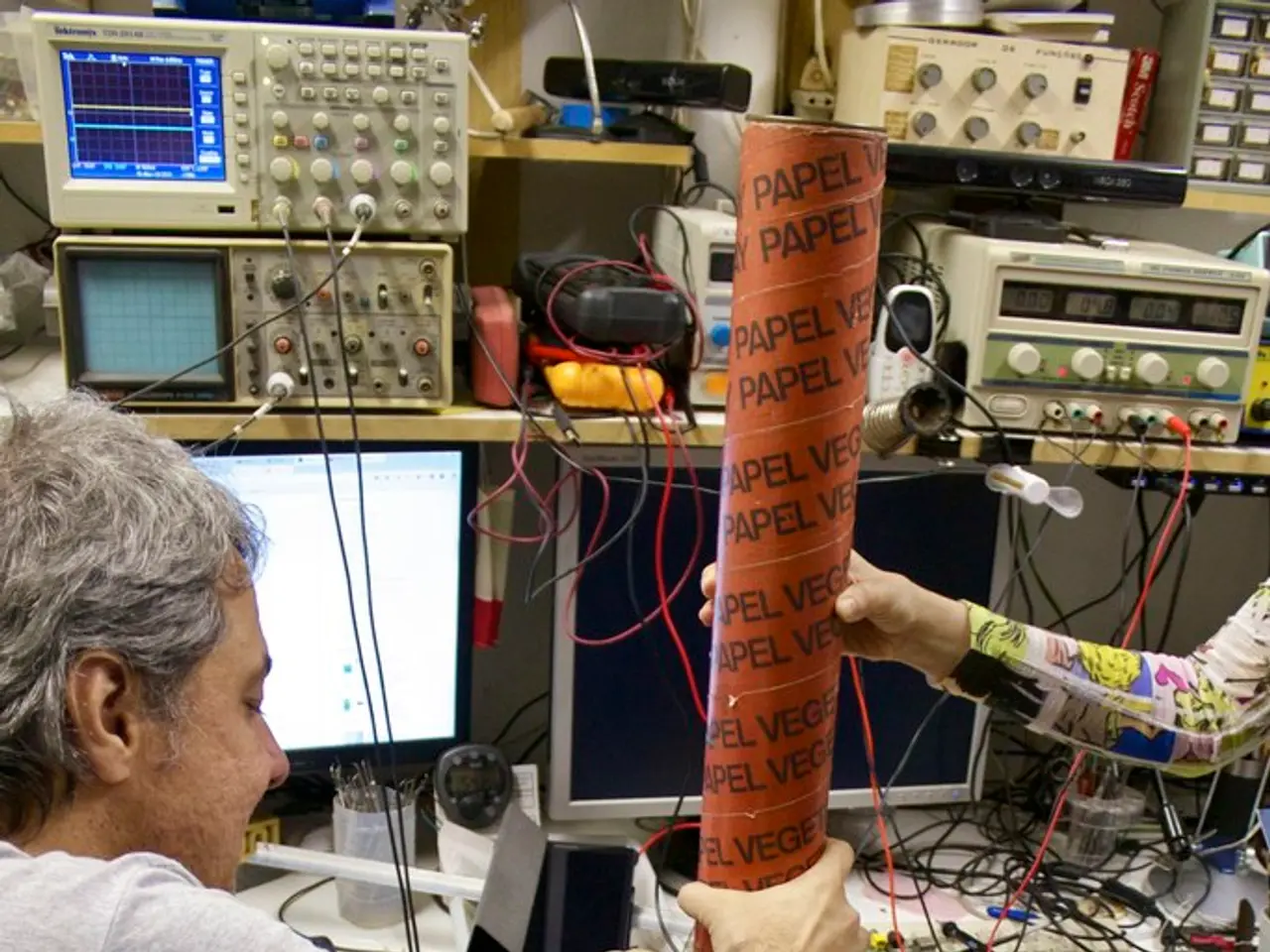Artificial Intelligence, Sensors, and Biotechnology Shaping the Evolution of Intelligent Cognitive Systems
Living Intelligence: Bridging the Gap Between Machines and Biology
Living intelligence, a groundbreaking collaboration between artificial intelligence (AI), smart sensors, and biotechnology, is revolutionising the way technology interacts with the world. These systems are designed to mimic natural and human-like behaviours, adapting and learning in real-time [1].
At the heart of living intelligence are smart sensors, acting as sensory organs that collect a wide range of signals, such as movement, body temperature, electrical activity, or biochemical markers. This data is then processed by AI algorithms, which analyse it, identify patterns, and make predictions [1]. Machine learning models are particularly adept at this, while deep learning can detect subtle, complex signals like emotional cues or early health symptoms.
Biotechnology plays a crucial role in this collaboration, interfacing with living organisms more naturally. For instance, biosensors in healthcare devices like smart insulin pumps can adjust in real-time to physiological changes [1]. This integration allows living intelligence systems to behave more like living organisms, adapting their behaviour based on continuous feedback loops, learning from outcomes, and evolving their responses to improve effectiveness and accuracy.
The result is technology that feels more natural and beneficial in applications such as healthcare monitoring, agriculture, and emergency response. It's a development that blurs the traditional boundary between biology and machines, promoting a new kind of connected, autonomous system that supports complex real-world needs [1].
Living intelligence combines: - AI's data analysis and decision-making capabilities, - Smart sensors' real-time data collection resembling biological senses, - Biotechnological interfaces enabling dynamic interaction with biological systems.
This fusion creates adaptive, learning systems that operate and behave in ways more aligned with natural, human-like intelligence and responsiveness [1].
Moreover, generative intelligence is opening up new avenues for research, allowing researchers to explore areas that were previously inaccessible using manual or trial-and-error approaches. Generative intelligence platforms are becoming increasingly self-sufficient, running their simulations, refining their methods, and updating their knowledge as they gain new insights.
However, with the advancement of living intelligence comes the need for new ways to evaluate, verify, and guide these technologies, especially when they can affect public health, natural systems, or future generations. Ethics and safety must be considered from the start in the design of living intelligence systems, protecting private data, preventing unfair decisions, and ensuring the systems cease operation if there is a risk of harm.
In conclusion, living intelligence is not just about creating more intelligent machines; it's about developing connected systems that enhance life while respecting complexity. It's a development that prompts us to reconsider the boundary between biology and machines, and to envision a future where technology is an integral part of our lives, helping us stay healthy, move better, and respond more effectively to the challenges of the world.
[1] Source: Living Intelligence Systems: A Review, IEEE Access, 2021.
- The fusion of AI, smart sensors, and biotechnology in living intelligence provides machines with the ability to collect real-time data, similar to biological senses, and analyze it for decision-making.
- Advancements in generative intelligence enable researchers to explore new avenues in areas that were previously inaccessible, allowing for adaptive, learning systems.
- The integration of technology and biology in living intelligence promotes a new kind of connected, autonomous system that supports complex real-world needs in fields like healthcare monitoring, agriculture, and emergency response.
- With the advancement of living intelligence, it is crucial to consider ethics and safety in designing these systems, to protect private data, prevent unfair decisions, and ensure they cease operation if there is a risk of harm, particularly when they can affect public health, natural systems, or future generations.




